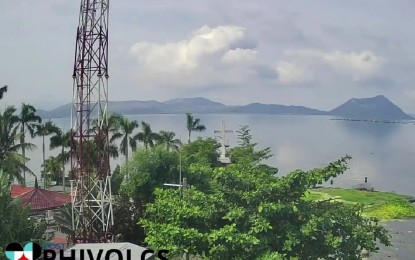
DEGASSING ACTIVITY. Degassing activity at the Taal main crater on Friday (June 7, 2024) which generated volcanic smog in the area. The public is advised to take precautions against vog exposure. (Screenshot from Phivolcs Facebook)
MANILA – The Philippine Institute of Volcanology and Seismology (Phivolcs) on Friday warned the public against exposure from vog (volcanic smog) as Taal Volcano emitted high sulfur dioxide (SO2).
The volcano emitted 11,072 tonnes of SO2 on Thursday. Its average SO2 emission is 8,294 tonnes/day for the year.
Vog consists of fine droplets containing volcanic gas, which can cause irritations to the eyes, throat, and respiratory tract in severities depending on gas concentrations and duration of exposure.
Phivolcs said the weather bureau forecasts probable weakening of wind in the coming days, which could lead to potential SO2 accumulation and vog formation over Taal’s surrounding areas.
"We indicated Taal region in the advisory, but the actual extent or reach of vog would depend on the wind direction," Phivolcs Director Teresito Bacolcol said.
Phivolcs recommends communities at risk to limit their exposures to vog by avoiding outdoor activities, and closing doors and windows to block out volcanic gas.
The public is advised to use N95 masks, drink plenty of water and eek medical help when needed.
Taal Volcano remains under Alert Level 1 (abnormal condition). Sudden steam-driven or phreatic explosions, volcanic earthquakes, minor ashfall and lethal accumulations or expulsions of volcanic gas can occur and threaten areas within the Taal Volcano Island (TVI).
Entry into TVI, Taal's permanent danger zone, is prohibited.
Local government units are likewise advised to monitor SO2 exposure and potential impacts. (PNA)
